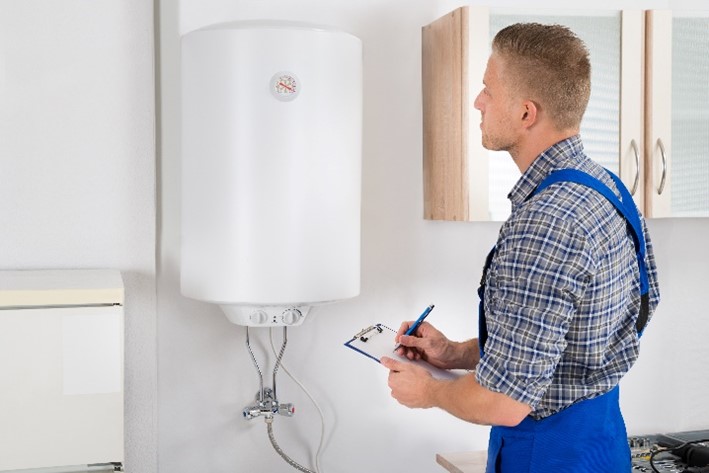Best Practices for Caring for Your Home's Hot Water System
Book An Estimate NowEach person maintains their personal ideas about How to Maintain a Hot Water Heater in a Few Simple Steps.

Warm water is crucial for day-to-day convenience, whether it's for a rejuvenating shower or washing recipes. To guarantee your warm water system runs efficiently and lasts much longer, normal upkeep is vital. This write-up gives useful ideas and insights on how to maintain your home's warm water system to prevent disruptions and pricey fixings.
Introduction
Maintaining your home's warm water system may seem daunting, however with a few simple actions, you can ensure it runs smoothly for years ahead. This guide covers every little thing from comprehending your warm water system to do it yourself maintenance tips and recognizing when to contact specialist assistance.
Significance of Keeping Your Warm Water System
Regular upkeep not just prolongs the lifespan of your warm water system however additionally guarantees it operates successfully. Overlooking maintenance can cause decreased performance, higher power expenses, and even early failure of the system.
Indicators Your Hot Water System Demands Maintenance
Understanding when your hot water system requires attention can protect against major problems. Look out for indications such as inconsistent water temperature level, strange sounds from the heater, or corroded water.
Understanding Your Warm Water System
Before diving right into upkeep tasks, it's handy to understand the fundamental components of your warm water system. Typically, this includes the hot water heater itself, pipes, anode poles, and temperature controls.
Regular Monthly Upkeep Tasks
Regular month-to-month checks can help capture small problems prior to they escalate.
Flushing the Hot Water Heater
Flushing your hot water heater gets rid of sediment accumulation, improving effectiveness and lengthening its life.
Checking and Replacing Anode Rods
Anode poles prevent rust inside the container. Inspecting and replacing them when worn is critical.
Inspecting and Changing Temperature Level Setups
Changing the temperature setups makes certain ideal performance and safety and security.
Do It Yourself Tips for Maintenance
You can do numerous maintenance tasks on your own to maintain your hot water system in top problem.
Looking for Leaks
Frequently check pipelines and connections for leaks, as these can cause water damages and greater bills.
Evaluating Pressure Relief Valves
Checking the stress relief valve ensures it functions properly and protects against too much pressure buildup.
Protecting Pipes
Protecting warm water pipelines reduces warmth loss and can conserve power.
When to Call an Expert
While DIY upkeep is helpful, some issues need expert know-how.
Complicated Issues Needing Specialist Aid
Examples include significant leakages, electric problems, or if your water heater is constantly underperforming.
Regular Specialist Maintenance Advantages
Expert upkeep can consist of thorough examinations, tune-ups, and ensuring compliance with security requirements.
Verdict
Normal upkeep of your home's warm water system is essential for efficiency, longevity, and expense savings. By complying with these ideas and recognizing when to look for specialist aid, you can make certain a trusted supply of warm water without unanticipated disturbances.
How to Maintain an Instant Hot Water Heater
Before tinkering with your hot water heater, make sure that it’s not powered on. You also have to turn off the main circuit breaker and shut off the main gas line to prevent accidents. Also turn off the water valves connected to your unit to prevent water from flowing into and out of the appliance. 2. When you’re done, you have to detach the purge valves’ caps. These look like the letter “T†and are situated on either side of the water valves. Doing so will release any pressure that has accumulated inside the valves while at the same time avoid hot water from shooting out and burning your skin. 3. When the purge valves’ caps are removed, you have to connect your hosing lines to the valves. Your unit should have come with three hoses but if it didn’t, you can purchase these things from any hardware or home repair shops. You can also get them from retail stores that sell water heating systems. Read the user’s manual and follow it to complete this task properly. When the hosing lines are connected, open the purge port’s valves. 4. You should never use harsh chemical cleaners or solutions when cleaning your unit. Make use of white vinegar instead. It should be undiluted and you’ll probably use about 2 gallons. 5. Now flush your water heater. This task should probably take about 40 minutes. We can’t give you specific directions for this because the procedure is carried out depending on the type, model and brand of your heater. With that being said, refer to the user’s manual. 6. When you’re done draining the unit, you have to turn off the purge port valves again. Remove the hosing lines that you earlier installed on each of the water valves. Put the valve caps (purge port) back in their respective places and be very careful so as not to damage the rubber discs that are found inside these caps. 7. Now that everything’s back in place, check your user’s manual again to find out how to reactivate your water heating system. 8. Once it is working, turn one of your hot water faucets on just to let air pass through the heater’s water supply pipes. Leave the tap on until water flows smoothly out of it. https://www.orrplumbing.com/blog/2014/september/how-to-maintain-an-instant-hot-water-heater/

I came across that page on How to Maintain a Hot Water Heater in a Few Simple Steps while doing a lookup on the search engines. Are you aware of another individual who is looking into the niche? Take a moment to share it. Kudos for your time. Come back soon.
Call